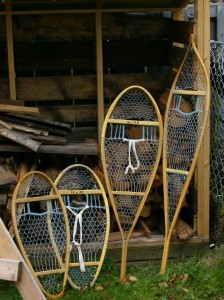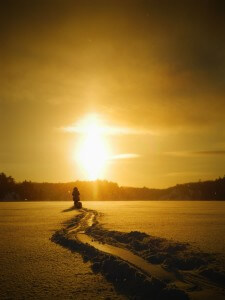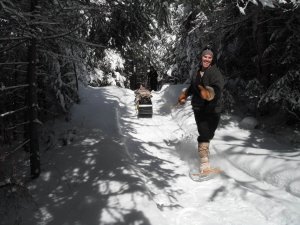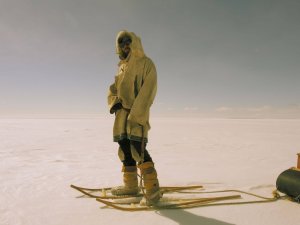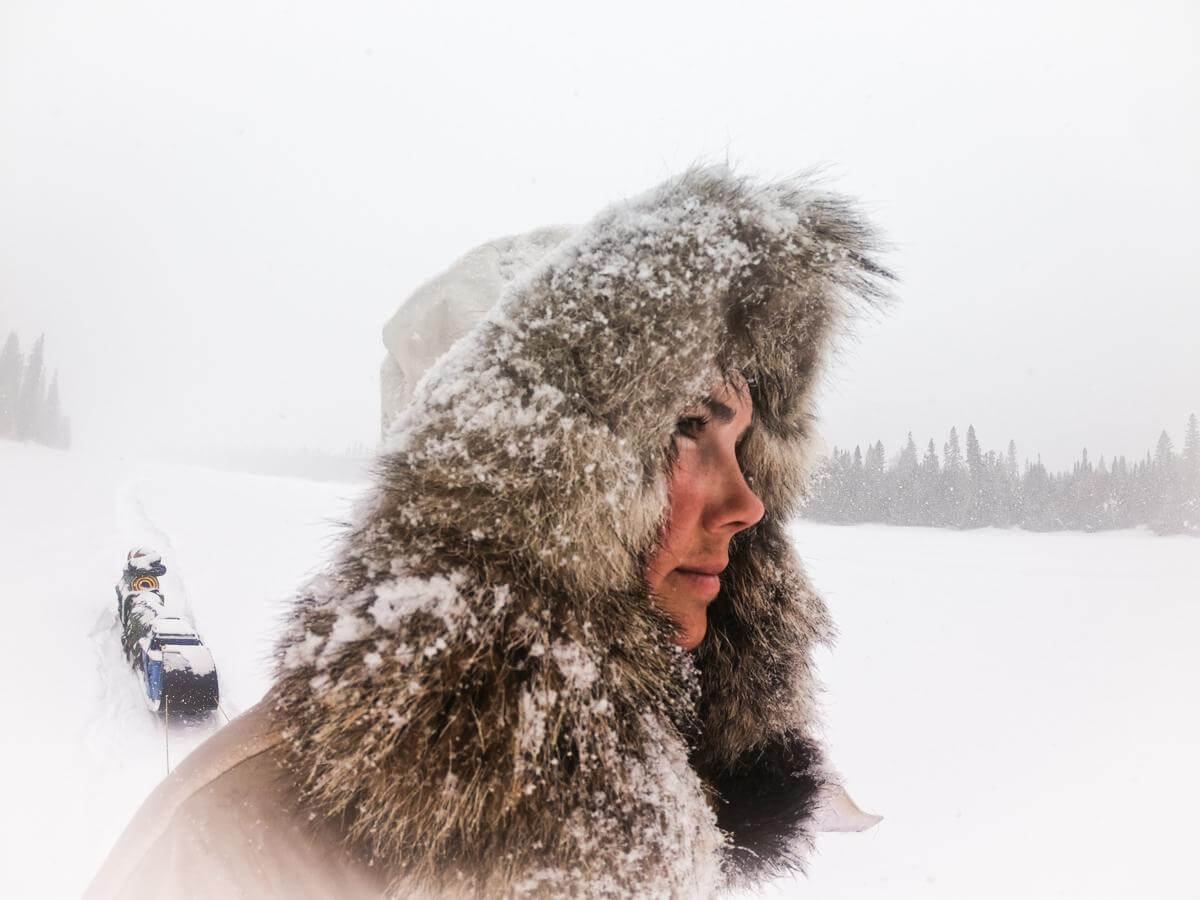| Sizing your Snowshoes | |
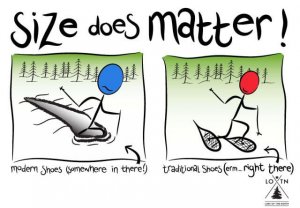 When it comes to efficient snowshoe use in deep soft snow, size really does matter. Traditional snowshoe designs reflect this fact well, and tend to be much larger than most modern shoes. We typically recommend people use the largest shoes that their gait or stride can accommodate. Once you’ve selected you snowshoe size and style, please take a look at our Binding Selection Guide to pick the best bindings for your use.Note: All of our retail products including finished woven snowshoes and DIY kits have been moved over to LOTN Outfitters. They will take care of all of your snowshoe and binding needs to gear up for joining us on our expeditions or getting out on your own adventure!Gearing up for one of our expeditions? What do WE use? When it comes to efficient snowshoe use in deep soft snow, size really does matter. Traditional snowshoe designs reflect this fact well, and tend to be much larger than most modern shoes. We typically recommend people use the largest shoes that their gait or stride can accommodate. Once you’ve selected you snowshoe size and style, please take a look at our Binding Selection Guide to pick the best bindings for your use.Note: All of our retail products including finished woven snowshoes and DIY kits have been moved over to LOTN Outfitters. They will take care of all of your snowshoe and binding needs to gear up for joining us on our expeditions or getting out on your own adventure!Gearing up for one of our expeditions? What do WE use?
We used to wear both the Huron and the Bearpaw style snowshoes. For the last several years we have stopped brining the Huron style and have exclusively been wearing the Bear Paw. We have found that the increased weight of the huron outweighed the benefits of the tracking from the tail. So if you’re coming on a trip with us, Bear Paws are the way to go! |
| Snowshoe Styles | |
|
There are a wide variety of traditional snowshoe styles that have evolved to fill the needs of their users and to fit the landscape in which they were used. We recommend two basic styles of snowshoes that do well over a wide range of conditions: |
|
| 1. Huron/ Algonquin Snowshoes | |
|
Available sizes (in inches) and recommendations: |
Huron/ Algonquin Snowshoes have a classic “teardrop” shape with a rounded, up-turned toe and a long tail. They are both wide and long, and are our favourite “travelling” snowshoe. That is, they do well in open country: on lakes, rivers, marshes and fields. The tail serves two functions: it stabilizes the shoe to keep it from twisting on your foot, and also acts as a counter-weight so that the toe naturally crests deep snow. |
| 2. Bearpaw Snowshoes | |
|
Available sizes (in inches) and recommendations: |
Bearpaw snowshoes are short and wide, with a round toe and no tail. These are our favourite “bush” or “camp” shoes. They do exceptionally well in forested country – and are great around camp, or when trapping, hunting or gathering wood. Without a tail, these shoes are much more evenly balanced than Huron shoes. Thus, the toes do not crest deep snow as well, but it is much easier to lift the heel of the shoe to turn or back up.
These are our expedition shoe of choice. If you’re bringing one pair- these are the ones! |
| 3. Cree/ Ojibwe Snowshoes | |
|
Available sizes (in inches) and recommendations: |
Cree or Ojibwe snowshoes are easily recognized as a snowshoe native to much of northern Ontario. These shoes are long and narrow, with both a tail, and a pointed, up-turned toe. These shoes can be great for fast travel in open country, however in our experience the commercially available frames in this style are all too narrow. Very narrow frames lack lateral stability (ie. they tend to dive sideways into the snow) and do not pack a great “float” or trail for a toboggan to follow in. While travelling along the James Bay coast of Northern Quebec we witnessed native-made Cree-style snowshoes which were wider than commercial frames, and did not seem to suffer this disadvantage. |

